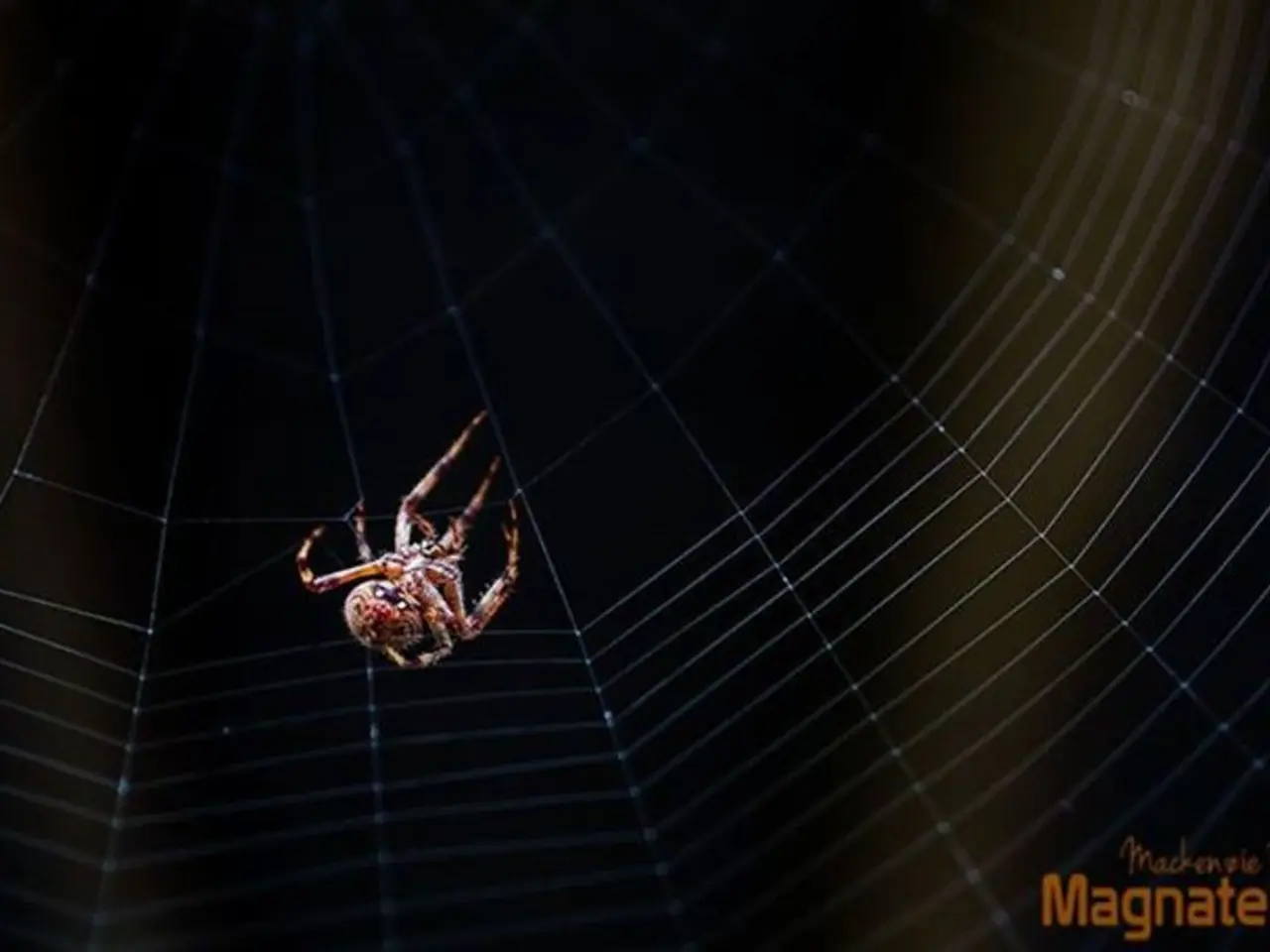Differing Features of Varicose Veins and Spider Veins Explained
Varicose veins and spider veins are two common conditions that affect the veins, but they differ significantly in their causes, symptoms, treatments, and health implications.
Causes
Spider veins, characterised by small, thin blood vessels visible near the skin surface, are often due to prolonged standing or sitting, hormonal changes, sun exposure, genetics, obesity, and in some cases, connective tissue disorders. On the other hand, varicose veins result from damaged veins or valve function in the deeper veins, leading to blood pooling and vein enlargement. These may be caused by chronic venous insufficiency or other venous diseases, and risk factors include aging, genetics, and increased pressure on leg veins, such as during pregnancy or from obesity.
Symptoms
Spider veins usually appear as fine, red, blue, or purple lines resembling a web or tree branches and are mostly painless, sometimes causing mild itching or burning. Varicose veins, however, appear as thick, swollen, knotted, and bulging veins often with symptoms like aching muscles, burning, itching, leg cramps, pain when sitting or standing, and skin color or texture changes. They can cause significant discomfort and worsen over time.
Treatments
Treatment for spider veins is primarily for cosmetic reasons and can be addressed with laser therapy or sclerotherapy, which involves injecting a solution to close the vein. Varicose veins require more intensive treatment options such as sclerotherapy, VenaSeal (medical glue injection), radiofrequency ablation (RFA), or microphlebectomy (surgical removal). These aim to close or remove damaged veins and relieve symptoms.
Health Implications
Spider veins are mostly a cosmetic concern but can occasionally indicate early venous insufficiency. They rarely cause serious health problems. Varicose veins, however, are a more serious condition that, if left untreated, can lead to complications such as skin changes, ulcers, blood clots, and chronic venous insufficiency. They warrant medical evaluation especially if symptoms are present.
In summary, spider veins are smaller, surface-level, and mainly cosmetic with mild symptoms, while varicose veins involve larger, deeper veins, causing more significant discomfort and health risks, requiring more advanced treatments. It is essential to seek medical advice if experiencing symptoms associated with either condition.
[1] Mayo Clinic. (2021, March 18). Varicose veins. https://www.mayoclinic.org/diseases-conditions/varicose-veins/symptoms-causes/syc-20352231 [2] American Society for Vascular Surgery. (2021). Varicose veins. https://www.asvs.org/patients/disease-condition/varicose-veins [3] Cleveland Clinic. (2021, March 25). Spider veins. https://my.clevelandclinic.org/health/diseases/18105-spider-veins [4] National Heart, Lung, and Blood Institute. (2021, October 27). Chronic venous insufficiency. https://www.nhlbi.nih.gov/health-topics/chronic-venous-insufficiency [5] Johns Hopkins Medicine. (2021, April 29). Varicose veins. https://www.hopkinsmedicine.org/health/conditions-and-diseases/varicose-veins
- While spider veins are often due to sun exposure, genetics, and hormonal changes, varicose veins result from damaged veins or valve function in the deeper veins.
- In some cases, spider veins can indicate early venous insufficiency, although they rarely cause serious health problems.
- In comparison, varicose veins can lead to complications such as skin changes, ulcers, blood clots, and chronic venous insufficiency, necessitating medical evaluation.
- Treatment for spider veins may involve cosmetic procedures like laser therapy or sclerotherapy, while varicose veins require more intensive options like sclerotherapy, VenaSeal, radiofrequency ablation, or microphlebectomy.
- Health and wellness, particularly through fitness and exercise, can help manage the risk factors for both spider veins and varicose veins, such as obesity and prolonged standing.
- Nutrition plays a crucial role in maintaining cardiovascular health, which can help prevent varicose veins and manage their symptoms.
- Men and women may experience both spider veins and varicose veins; understanding the unique aspects of mens-health and womens-health can help in identifying potential risk factors and seeking appropriate care.
- Skin care is essential in preventing sun exposure, a known cause of spider veins, and in maintaining healthy skin around the affected areas, especially in the case of varicose veins.




